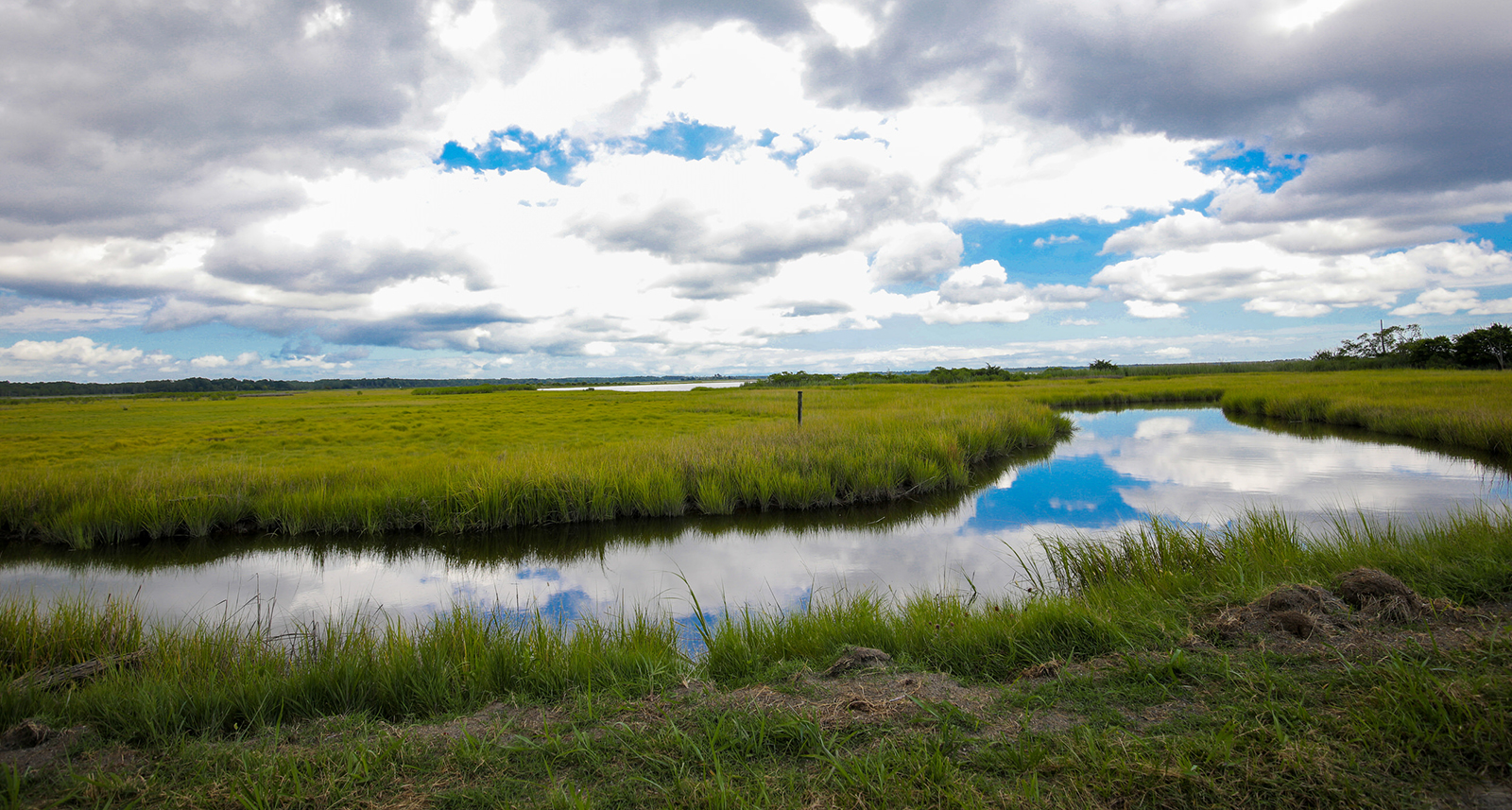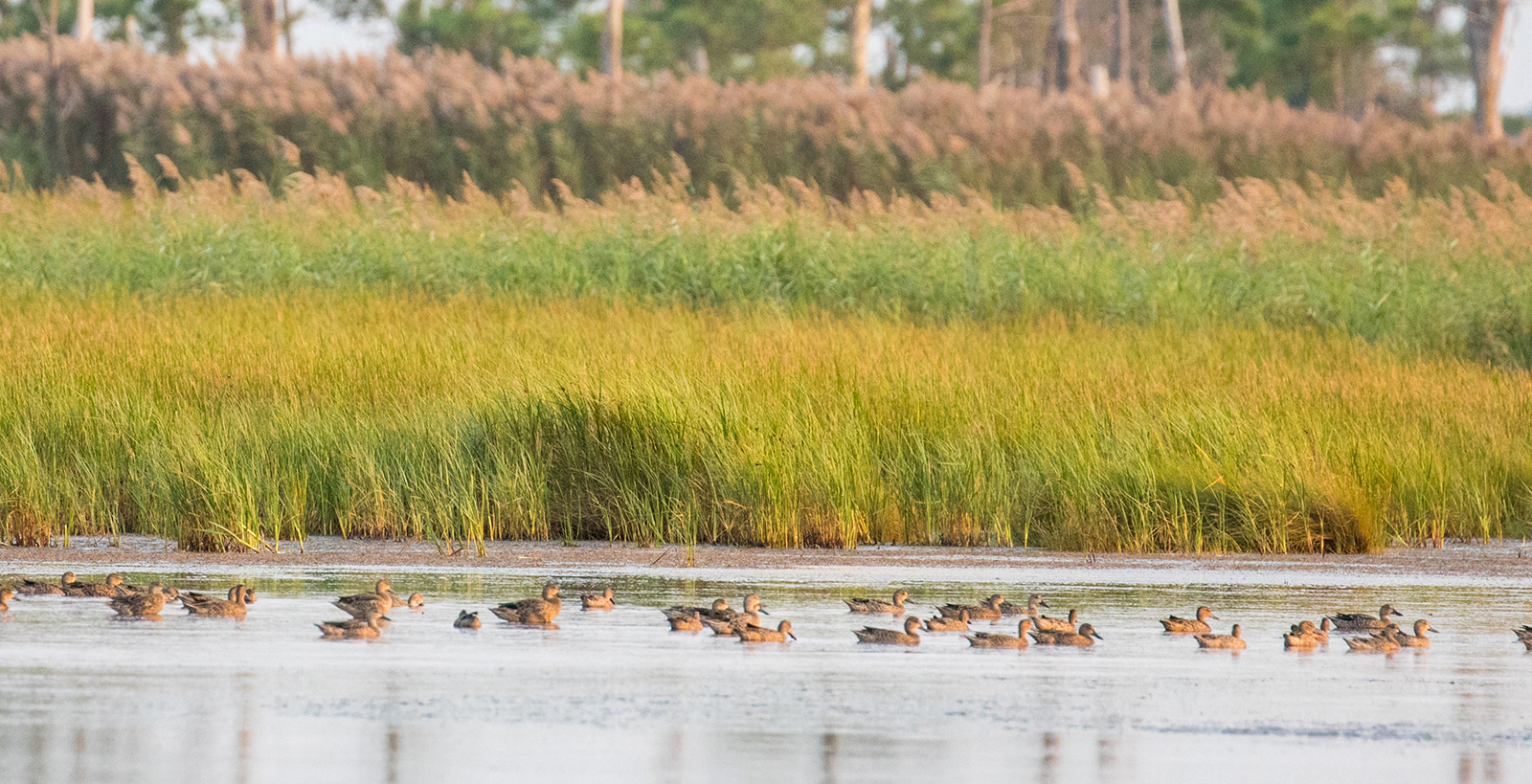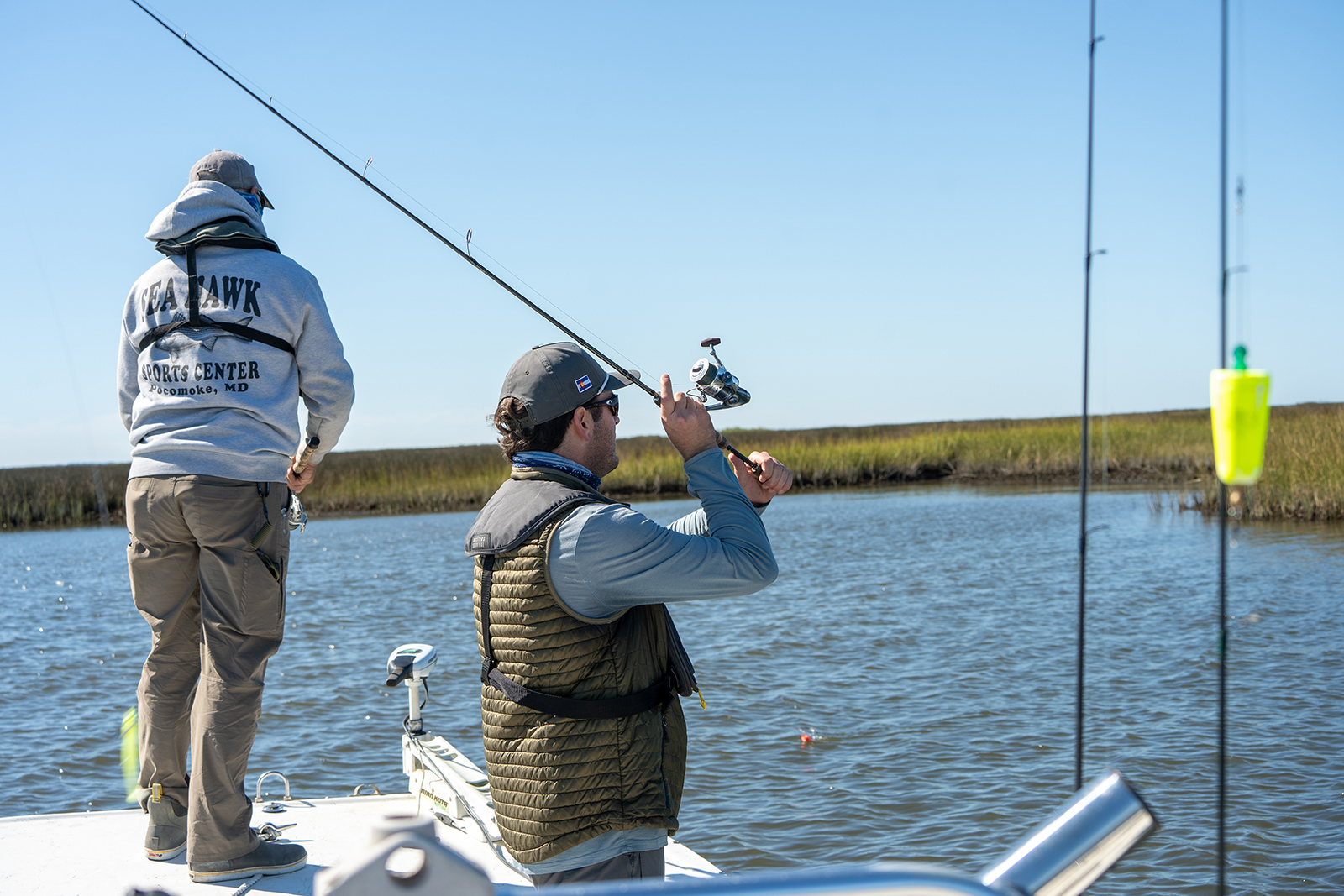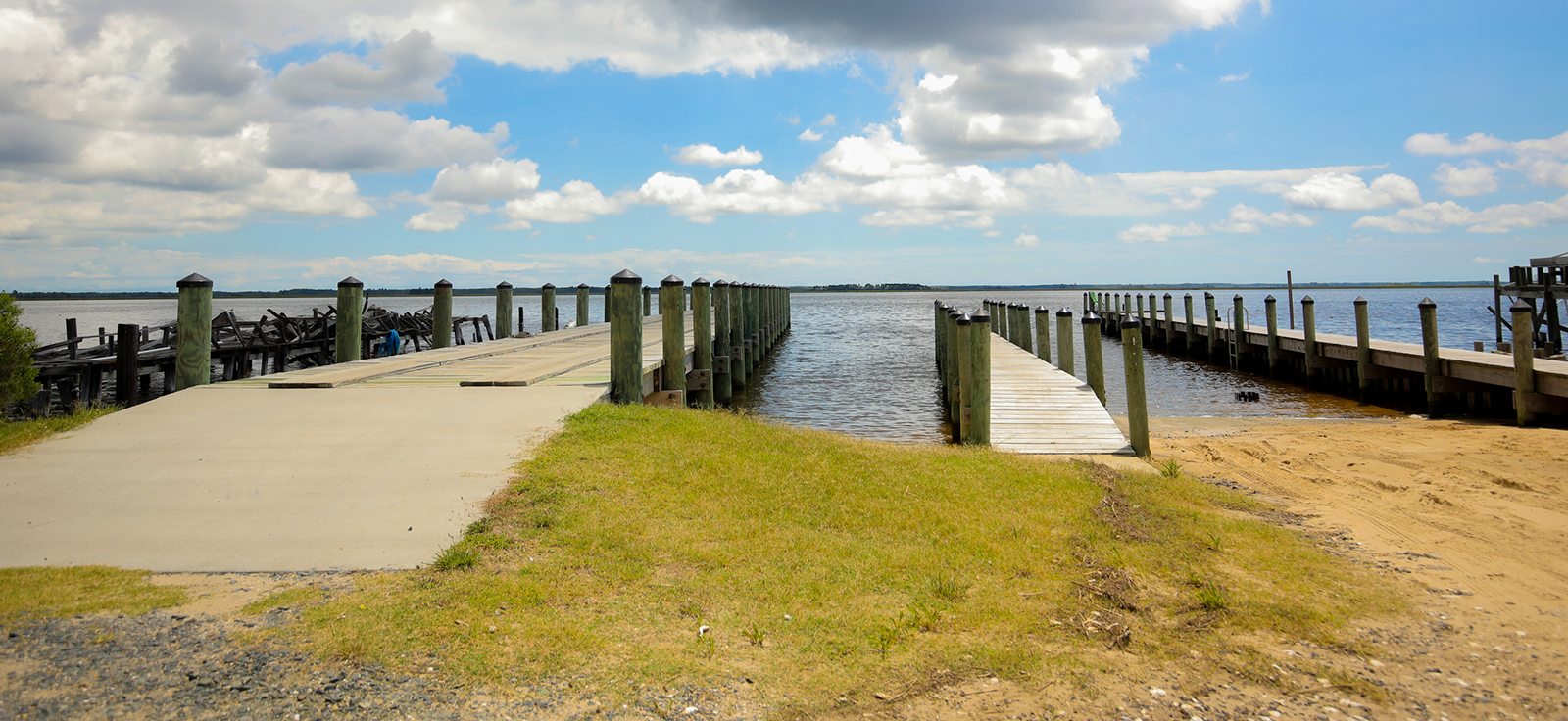By Alex McCrickard/DWR
In the northernmost corner of Virginia’s Eastern Shore lies the Saxis Wildlife Management Area (DWR). Saxis WMA is located in Accomack County on the Chesapeake Bay. This WMA encompasses 5,678 acres of land. While the WMA does have forested high ground to the east, the vast majority of this property is essential tidal marshland habitat.
This expansive saltmarsh ecosystem is full of life and when visiting this property, I’ll admit that I felt small and insignificant. The marsh is seemingly endless, and when you venture out by boat into the Pocomoke Sound you get a wonderful view of the Chesapeake Bay looking out towards Tangier Island. It is here that you are at the Chesapeake’s widest point, a straight shot from Saxis WMA across the Bay to the mouth of the Potomac River spans approximately 30 miles.

The tidal marshes at Saxis WMA are not only beautiful, but also vital habitat and filters for the Chesapeake Bay and its wildlife. Photo by Meghan Marchetti/DWR
Here in Virginia, marsh habitat is oftentimes referred to as the kidneys of the Chesapeake Bay. Like nature’s filter, tidal marshes and their salt-tolerant grasses remove pollutants and excess nutrients from the Chesapeake Bay. Like a sponge, marshes absorb and hold water. Species like smooth cordgrass, saltmeadow hay, and black needle rush all have deep fibrous root systems that help to prevent shoreline erosion. If that wasn’t enough, their carbon-storage capabilities are impressive, as tidal wetland plants and soils absorb CO2. Marshes truly are a living breathing ecosystem, fighting pollution and sea level rise.

The tidal marsh habitat at Saxis WMA hosts a wide variety of wildlife for viewing, hunting, and fishing opportunities. Photo by Meghan Marchetti/DWR
Tidal marshes are also enormously valuable for the essential habitat they provide for both terrestrial and aquatic wildlife. Migratory birds traveling up and down the Atlantic Flyway utilize these marsh ecosystems during their journeys, stopping for periods of time to feed and rest. For some birds, these habitats are the destination point for breeding and overwintering. The shallow water habitat that is common in and around marshes acts as a nursery for many different fish species, crustaceans, and shellfish like mussels, clams, and oysters. From striped killifish and mummichogs to Atlantic menhaden, spot, and croaker, marshes provide protection and a haven from predators. Naturally, the presence of smaller fish at these marshes draws in larger fish like striped bass, red drum, speckled trout, bluefish, and summer flounder to forage.
Recreational opportunities are plentiful at Saxis WMA. From a hunting perspective, Saxis is best known for its waterfowl opportunities and common species include mallard, widgeon, pintail, and teal. Sea ducks, canvasback, and redhead—in addition to goldeneye, bufflehead and mergansers—are found throughout adjacent open-water areas. Wildlife viewers will get the best chances at seeing these species, in addition to loons, herons, egrets, and a variety of shorebirds, by paddle craft or from shore with a spotting scope. There are good viewing opportunities at the Guard Shore Tract on the WMA, a site on the Virginia Bird and Wildlife Trail.
It’s essential to watch the weather and wind to choose your days wisely. However, maneuvering around the many points and guts within this saltmarsh complex will provide plenty of opportunities to see all sorts of life when the conditions are safe. Some kayakers have even spotted river otter, muskrats, and mink along the edges of the marsh.
From a fishing perspective, this WMA offers a wide variety of opportunity to target saltwater species. Anglers will have the best success fishing from boats or kayaks under the right conditions. Light tackle and fly anglers will have plenty to chase in these shallow marshes, including striped bass, speckled trout, and red drum. Anglers fishing the drop-offs in the channel will find a variety of species by fishing bottom rigs such as croaker, whiting, spot, silver perch, and even oyster toadfish.

Fishing at Saxis. Photo by Deane Flickinger/DWR
Spring and fall are likely the most productive seasons for fishing the marsh at Saxis, but anglers can find success throughout the summer and even during the winter before it gets too cold. To learn more about these saltwater species, visit the Virginia Marine Resources Commission’s website for regulations and additional information.
In terms of facilities, the easiest way to explore this WMA is by accessing the water at the Accomack County-owned Saxis boat ramp off Hammock Road. Launching here puts you on the water at Messongo Creek. You can choose to explore the wild here by navigating through the marshes or by heading out into the open water of Pocomoke Sound. Either way, Saxis WMA will not disappoint, and this property is one of the best along Virginia’s picturesque Eastern Shore.

The county-owned boat ramp is a great place to use to access Saxis WMA by water. Photo by Meghan Marchetti/DWR


